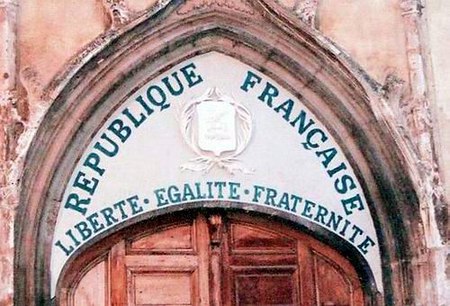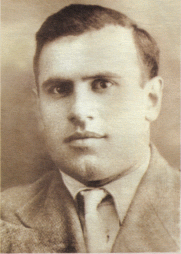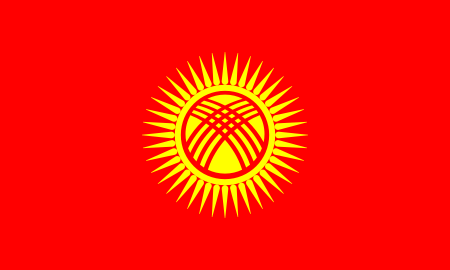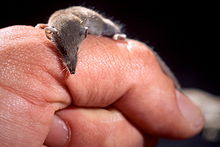Etruscan shrew
| |||||||||||||||||||||||||||||||||||
Read other articles:

G-1159 Gulfstream II Role Business jetType of aircraft National origin United States Manufacturer Grumman/Gulfstream Aerospace First flight 2 October 1966 Status In service Produced 1967–1980[1] Number built 256[1] Variants Gulfstream III A highly modified GII used to flight test systems hardware for the Broad Area Maritime Surveillance (BAMS) UAV contract bid, seen here taxiing at Mojave The Gulfstream II (G-II) is an American twin engine business jet designed and first built …

この項目には、一部のコンピュータや閲覧ソフトで表示できない文字が含まれています(詳細)。 数字の大字(だいじ)は、漢数字の一種。通常用いる単純な字形の漢数字(小字)の代わりに同じ音の別の漢字を用いるものである。 概要 壱万円日本銀行券(「壱」が大字) 弐千円日本銀行券(「弐」が大字) 漢数字には「一」「二」「三」と続く小字と、「壱」「弐」…

Mahanayak beralih ke halaman ini. Untuk novel sejarah karya Vishvas Patil, lihat Mahanayak (novel). Uttam KumarUttam KumarLahirArun Kumar Chatterjee(1926-09-03)3 September 1926Ahiritola, Kalkuta, Bengal, India BritaniaMeninggal24 Juli 1980(1980-07-24) (umur 53)Tollygunge, Kalkuta, Bengal Barat, IndiaPekerjaanAktorProduserSutradara, Sutradara Musik, Penyanyi playbackTahun aktif1945–1980Tinggi5 ft 11 in (1,80 m)Suami/istriGauri ChatterjeeAnakGautam ChatterjeeSitus webhtt…

Rodney Glen King Rodney Glen King (Sacramento, 2 aprile 1965 – Rialto, 17 giugno 2012) è stato un tassista statunitense divenuto celebre per essere stato vittima, il 3 marzo 1991, di un violento pestaggio da parte di diversi agenti del Los Angeles Police Department[1]. Indice 1 Biografia 2 Opere dedicate 3 Note 4 Bibliografia 5 Voci correlate 6 Altri progetti 7 Collegamenti esterni Biografia King era nato a Sacramento e crebbe ad Altadena. Suo padre, un alcolista, morì nel 1984, a 42…

Державний комітет телебачення і радіомовлення України (Держкомтелерадіо) Приміщення комітетуЗагальна інформаціяКраїна УкраїнаДата створення 2003Керівне відомство Кабінет Міністрів УкраїниРічний бюджет 1 964 898 500 ₴[1]Голова Олег НаливайкоПідвідомчі орг�…

2013 studio album by Elvis Costello and the RootsWise Up GhostStudio album by Elvis Costello and the RootsReleased17 September 2013Recorded2012–2013Genre Funk[1] R&B[1] Length55:54LabelBlue NoteProducerElvis Costello, Questlove, Steven MandelElvis Costello chronology National Ransom(2010) Wise Up Ghost(2013) Look Now(2018) The Roots chronology Undun(2011) Wise Up Ghost(2013) ...And Then You Shoot Your Cousin(2014) Singles from Wise Up Ghost Walk Us UptownReleased: 2…
2020年夏季奥林匹克运动会马来西亚代表團马来西亚国旗IOC編碼MASNOC马来西亚奥林匹克理事会網站olympic.org.my(英文)2020年夏季奥林匹克运动会(東京)2021年7月23日至8月8日(受2019冠状病毒病疫情影响推迟,但仍保留原定名称)運動員30參賽項目10个大项旗手开幕式:李梓嘉和吳柳螢(羽毛球)[1][2]閉幕式:潘德莉拉(跳水)[3]獎牌榜排名第74 金牌 銀牌 銅牌 �…

Famous beautiful women in Chinese history Changzhou combs representing the Four Beauties of China Four Great BeautiesChinese四大美女TranscriptionsStandard MandarinHanyu Pinyinsì dà měi nǚYue: CantoneseJyutpingsei3 daai6 mei5 neoi5Southern MinHokkien POJsì tāi bí-lú The Four Beauties or Four Great Beauties are four Chinese women who were renowned for their beauty. The four are usually identified as Xi Shi, Wang Zhaojun, Diaochan, and Yang Guifei.[1] The scarcity of historical …

{{dalam perbaikan}} SMP Muhammadiyah 1 Solo adalah Sekolah Menengah Pertama Swasta Muhammadiyah yang berada di kota Surakarta, Jawa Tengah, Indonesia, berlokasi di Jl. Flores No. 1, kampung Baru, Pasar Kliwon, Surakarta, secara geografis terletak di sebelah barat Benteng Vastenburg Surakarta. SMP Muhammadiyah 1 Simpon SurakartaSMP Muhammadiyah 1 Surakartasmp muhammadiyah 1 surakartaInformasiDidirikan1 Agustus 1952AkreditasiA+Kepala SekolahH. Sukidi, S.Ag., M.PdKetua KomiteHM. Joko Riya…

El Torreón Tipo Ganadería bravaFundación 1975Fundador Felipe LafitaSede central “El Torreón” y “Aguadelespino” (Santa Cruz de la Sierra, Cáceres)Personas clave Julio César Rincón Ramírez (ganadero)Yeison Enrique Vilora Reales (mayoral)Productos Toro de lidiaEncaste TorrestrellaJuan Pedro DomecqCoordenadas 39°20′27″N 5°48′31″O / 39.340916666667, -5.8086666666667[editar datos en Wikidata] El Torreón es una ganadería española de reses bravas fu…

رقادة إحداثيات 35°35′46″N 10°03′25″E / 35.596243°N 10.0569°E / 35.596243; 10.0569 تعديل مصدري - تعديل 35°35′46″N 10°03′25″E / 35.596243°N 10.0569°E / 35.596243; 10.0569 ورقة من المصحف الأزرق، متحف رقادة رقّادة مدينة أغلبية كانت تقع وسط البلاد التونسية وعلى مسافة 10 كم جنوبي غرب مدينة القي…

Padma ShriTypeNational CivilianCountryIndiaPresented byGovernment of IndiaRibbonObverseA centrally located lotus flower is embossed and the text Padma written in Devanagari script is placed above and the text Shri is placed below the lotus.ReverseA platinum State Emblem of India placed in the centre with the national motto of India, Satyameva Jayate (Truth alone triumphs) in Devanagari ScriptEstablished1954First awarded1954Total305PrecedenceNext (higher) Padma Bhushan← Padma Vibh…

English physicist, Nobel prize winner Sir Nevill MottBornNevill Francis Mott(1905-09-30)30 September 1905Leeds, EnglandDied8 August 1996(1996-08-08) (aged 90)Milton Keynes, Buckinghamshire, EnglandAlma materUniversity of CambridgeKnown for Mott problem Mott insulator Mott scattering Mott polynomials Mott formula Mott variable-range hopping Mott–Bethe formula Mott–Gurney law Mott–Schottky equation Mott–Schottky plot Schottky–Mott rule Wannier–Mott exciton Band bending P…

Separation of church and state in France You can help expand this article with text translated from the corresponding article in French. (January 2017) Click [show] for important translation instructions. View a machine-translated version of the French article. Machine translation, like DeepL or Google Translate, is a useful starting point for translations, but translators must revise errors as necessary and confirm that the translation is accurate, rather than simply copy-pasting machine-t…

Abdulla AlişBornAlişev Ğabdullacan Ğäbdelbari ulı(1908-09-15)15 September 1908Kayuki, Spassky Uyezd, Kazan Governorate, Russian EmpireDied25 August 1944(1944-08-25) (aged 35)Plötzensee Prison, Berlin, GermanyOccupationPoetNationalityTatarGenreFantasy, Children's Novels Alişev Ğabdullacan Ğäbdelbari ulı[a] (15 September 1908 – 25 August 1944), best known as Abdulla Aliş,[b] was a Soviet Tatar poet, playwright, writer and resistance fighter. Life He wrote mostly…

Questa voce o sezione sull'argomento induismo non cita le fonti necessarie o quelle presenti sono insufficienti. Puoi migliorare questa voce aggiungendo citazioni da fonti attendibili secondo le linee guida sull'uso delle fonti. Segui i suggerimenti del progetto di riferimento. Secondo l'interpretazione della maggior parte delle Sacre Scritture induiste, tra cui i Veda, il Kali Yuga è l'ultimo dei quattro yuga, ritenuto quello attualmente in vigore: si tratta di un'epoca oscura, caratteriz…

عظمت بايماتوف معلومات شخصية الميلاد 3 ديسمبر 1989 (العمر 34 سنة)أوش الطول 1.90 م (6 قدم 3 بوصة) مركز اللعب قلب الدفاع الجنسية قرغيزستان معلومات النادي النادي الحالي PS Barito Putera [الإنجليزية] الرقم 77 المسيرة الاحترافية1 سنوات فريق مشاركات (أهداف) 2005 FC Ak-Bura Osh [ال…

L'Albicomune L'Albi – Veduta LocalizzazioneStato Spagna Comunità autonoma Catalogna Provincia Lleida TerritorioCoordinate41°25′30″N 0°56′19″E41°25′30″N, 0°56′19″E (L'Albi) Altitudine526 m s.l.m. Superficie32,5 km² Abitanti798 (2001) Densità24,55 ab./km² Comuni confinantiLes Borges Blanques, Cervià de les Garrigues, La Pobla de Cérvoles, El Vilosell, Vinaixa Altre informazioniCod. postale25450 Fuso orarioUTC+1 Codice INE25009 TargaL Cartog…

Questa voce o sezione sull'argomento centri abitati del Brasile non cita le fonti necessarie o quelle presenti sono insufficienti. Puoi migliorare questa voce aggiungendo citazioni da fonti attendibili secondo le linee guida sull'uso delle fonti. Crissiumalcomune Crissiumal – Veduta LocalizzazioneStato Brasile Stato federato Rio Grande do Sul MesoregioneNoroeste Rio-Grandense MicroregioneTrês Passos AmministrazioneSindacoWalter Luiz Heck TerritorioCoordinate27°29′49″S 54°0…

American college basketball season This article needs additional citations for verification. Please help improve this article by adding citations to reliable sources. Unsourced material may be challenged and removed.Find sources: 2010–11 Drake Bulldogs men's basketball team – news · newspapers · books · scholar · JSTOR (February 2024) (Learn how and when to remove this message) 2010–11 Drake Bulldogs men's basketballConferenceMissouri Valley Conferenc…


